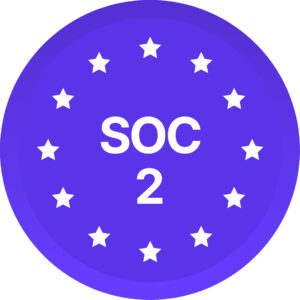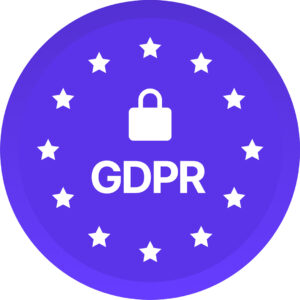As I reflect on what I learned while developing Preventing Sexual Harassment: Building Respectful Workplaces, I thought I had a solid understanding about the broader context of workplace harassment. I knew the statistics were troubling, but I hadn’t grasped just how deeply embedded and widespread the issue really is.
Consider this: over 100 countries have laws preventing harassment and violence, yet 1 in 5 workers globally still report experiencing it. That number alone reveals a glaring gap between policy and reality. Laws and policies provide a foundation, but without a shift in workplace culture—where respect and accountability are the norm—real change remains elusive.
The reality behind the numbers
If 1 in 5 workers reports harassment, how many remain silent? How many incidents get brushed off as “misunderstandings” or buried under bureaucracy? The fear of retaliation is the number one reason people don’t report harassment, especially those who are already vulnerable—women racialized employees, people with disabilities and men who experience harassment but fear stigma.
The more I dug into the data, the clearer it became: harassment thrives where power imbalances go unchecked. It’s not just about individual bad actors but about systemic issues that allow toxic behaviors to persist. And while many organizations invest in harassment prevention training, most programs focus on legal compliance rather than cultural transformation.
That’s where the real problem lies. Compliance isn’t enough if the workplace culture itself enables, excuses, or ignores inappropriate behavior. So, how do we move beyond surface-level policies to real, lasting change?
Intersectionality: Who’s most at risk
Workplace harassment isn’t experienced equally. Employees at the intersection of multiple marginalized identities face higher risks and greater barriers to reporting.
- Women of color experience both racial and gender-based harassment, creating compounded barriers to reporting and resolution. A lack of representation in leadership can make it even harder to seek support.
- LGBTQ+ employees are disproportionately targeted by workplace harassment, particularly misgendering, inappropriate comments, and exclusion. Many fear outing themselves by reporting incidents.
- Employees with disabilities often face harassment tied to their condition—either in the form of outright discrimination or passive exclusion from career opportunities.
- Men who experience harassment—particularly men of color or those who do not conform to traditional masculinity norms—may hesitate to report due to fear of stigma or not being taken seriously.
Ignoring these intersecting vulnerabilities leads to ineffective, one-size-fits-all solutions. Organizations must adopt customized solutions, including anonymous reporting tools, culturally competent HR policies, and leadership accountability.
Why mid-sized organizations are uniquely vulnerable
For organizations with 100–500 employees, the risks are even greater. Why? Because they’re at an inflection point—too big for informal oversight but often lacking the HR resources of larger corporations. Three key factors make mid-sized companies uniquely vulnerable:
- Power imbalances: Rapid scaling often outpaces HR infrastructure. Matrixed reporting lines and unclear advancement paths create ambiguity—a breeding ground for exploitative dynamics making it difficult for employees—especially those from underrepresented groups—to speak up.
- Cultural drift: Startups-turned-scaleups struggle to maintain founding values. A “work hard, play hard” mentality might devolve into exclusionary cliques or normalized off-hours messaging that blurs professional boundaries.This can also create openings for bias, stereotypes, and unchecked behaviors to take hold.
- Resource gaps: Unlike enterprises with dedicated DEI teams, mid-sized firms often lack bandwidth to audit culture or provide nuanced training. Basic compliance modules become a Band-Aid that don’t account for the complexities of harassment. Men, for example, often hesitate to report due to societal stigma, reinforcing the silence that allows misconduct to continue.
In short, mid-sized companies are at a tipping point. Without intentional culture-building, growth magnifies inequities allowing harassment to fester.
Role of technology: A smarter approach to prevention
Traditional HR-driven reporting systems often fail employees, either because they feel unsafe speaking up or they don’t trust the system to protect them. Technology is changing that.
- Anonymous reporting tools: AI-powered platforms allow employees to document harassment without immediate escalation, helping them build confidence in the reporting process.
- AI-driven analysis: Machine learning can identify patterns in complaints, flagging repeat offenders or departments with high incident rates before problems escalate.
- Sentiment analysis & pulse surveys: Real-time employee feedback can highlight cultural blind spots, helping HR address toxic behaviors before they escalate into full-blown harassment cases.
While technology isn’t a silver bullet, it removes common barriers to reporting and empowers organizations with data-driven insights to create safer, more transparent workplaces.
Closing the Gap
Many harassment prevention programs fall into the trap of checking a compliance box—reviewing policies, listing prohibited behaviors, and leaving it at that. That’s what inspired the development of our async training, Preventing Sexual Harassment: Building Respectful Workplaces.
Unlike traditional training, our program is designed to:
- Examine the root causes: We explore power dynamics, biases, and organizational culture through an intersectional lens, recognizing how different employees experience harassment differently.
- Empower bystanders: We train employees to intervene effectively and foster an environment of collective responsibility.
- Provide real-world scenarios: Instead of generic examples, we use diverse, industry-specific case studies that reflect the actual employee experiences.
- Teach prevention, not just reaction: Employees learn how to recognize and address harmful behaviors early—not just how to report them.
For People & Culture executives and organizational leaders, this is an opportunity to go beyond traditional training and embed respect, inclusion, and accountability into the company’s core culture.
Building a safe workplace: What it takes
Safety in the workplace isn’t just about physical well-being; it’s about psychological and emotional security, too. A harassment-free culture requires:
- No harassment and discrimination: Recognizing that race, gender, and disability increase vulnerability—and taking proactive steps to mitigate risk.
- Fair and just recourse: Ensuring employees trust that reports will be taken seriously, without fear of retaliation.
- No toxic leadership: Holding leaders accountable for setting and maintaining a culture of respect.
- No retaliation: Creating protections so employees feel safe reporting issues, knowing their careers won’t suffer for speaking up.
Redefining harassment prevention
Workplace safety isn’t just about physical well-being; it’s also about ensuring employees feel psychologically and emotionally secure. A workplace free from psychological, physical, and sexual harassment is fundamental to building a safe and inclusive environment. To build truly respectful workplaces, organizations need to:
- Move beyond compliance: Creating an environment where individuals are free from behaviors that demean, intimidate, or harm. This includes recognizing how intersecting identities, such as race, gender, disability, socio-economic status, and education level, can increase vulnerability to harassment and ensuring targeted efforts to address these disparities.
- Fair and just recourse: Ensuring employees can report incidents without fear of retaliation and that they trust the system to act fairly. Organizations must understand that different employee groups may have unique barriers to reporting, such as cultural stigma, economic vulnerability, or fear of disbelief.
- No toxic leadership: Addressing power imbalances and holding leaders accountable for creating and maintaining a respectful culture. Leadership training should also consider intersectionality, teaching leaders to be mindful of how systemic inequalities manifest in their teams.
- No retaliation: Providing clear policies and protections that empower employees to come forward without fear of repercussions, while fostering an environment where all voices—especially those of marginalized groups—are heard and valued.
Aligning efforts for lasting impact
To create lasting change, organizations must:
- Foster an inclusive culture: Ensure employees from all backgrounds feel respected and heard.
- Strengthen reporting mechanisms: Design transparent, accessible systems that employees trust.
- Train leaders: Equip managers and executives to recognize, prevent, and address sexual harassment while fostering trust within their teams.
- Enforcing anti-retaliation policies: Protect employees who report harassment from subtle or overt forms of retaliation, ensuring their safety and well-being.
The question isn’t whether to address workplace harassment—it’s how to do it effectively. As organizations grow, workplace dynamics become more complex. A proactive, data-driven approach can mean the difference between a culture of respect and one where hidden problems undermine productivity and morale.
Workplace harassment prevention isn’t a one-time initiative. It’s an ongoing commitment to respect, inclusion, and accountability.
So, ask yourself:
Are your current harassment prevention efforts driving real change—or just checking a box?
Diversio offers comprehensive training and development solutions designed specifically for mid-sized organizations navigating these challenges. To learn more about how Diversio can help transform your organization’s approach to sexual harassment prevention, contact us at hello@diversio.com.
Our newsletter and blogs feature personal opinions and diverse perspectives on diversity and inclusion. While individual articles may not reflect every reader’s view, we value the diversity of opinions and respect our contributors’ insights.

